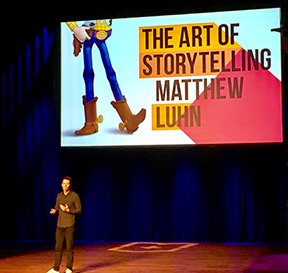Storytelling is No Flavor of the Month

04/25/17
In my last blog I posed a question: Is brand storytelling dead? Are its 15 minutes up? To find out, I did much research and had many conversations with marketing peers and companies that have used storytelling to promote themselves.
My conclusion: storytelling is alive and well, and still very relevant to today’s brands. Pixar’s Matthew Luhn said just that in his keynote at the Marketing United conference I attended last week.
Still, since publishing that blog I’ve heard from a few folks who remain unconvinced. In fact, they say storytelling is overexposed and they’re sick of hearing about it.

I thought they were just complaining that storytelling has worn out its welcome. Turns out, that’s not the issue at all. The critics are perplexed by its status as marketing flavor of the month — asserting that storytelling is not some trendy new marketing tactic that deserves its current fame. Rather, it’s something marcom folks have always done.
These naysayers have a point. Storytelling is inherent to the marketing discipline. It’s the foundation of journalism, and it’s fundamental to human communication. After all, we’ve been communicating through stories since, well, forever.
So, I agree that storytelling is not a trend.
But, and here’s where I part company with the critics, I am not tired of hearing about storytelling. And I’m definitely not tired of seeing brands use it effectively to connect with their customers.
To the haters I say, so what if the concept of storytelling is overexposed?
I believe that storytelling remains an essential piece of the communications puzzle. No, not because my job title includes the word storyteller but because stories help people make sense of a complex world. And, because storytelling helps us start important, sometimes difficult conversations.
Connecting Through Emotion
Storytelling is at its core about empathy and using characters and context to take an audience on an emotional journey. Ever cry or cheer (or both) at a Pixar or Disney flick? Then you get it. By bringing stories to life in a way that is authentic, people can deeply relate to each other.
This is true for individuals and for brands.
So while I’ll concede that more and more brands seem to have latched onto the storytelling concept to sell their products or services, there’s a reason. Storytelling works. Emotion activates audiences. And getting people to feel something is the first step toward getting them to do something. (Like buy a product or recommend one to a friend. That’s why brands love storytelling so much!)
Storytelling is about connecting with people through emotion, using empathy to bridge gaps in understanding, and activating audiences. And that will never go out of style.
The Power of Storytelling
Experience the power of storytelling for yourself. No, this isn’t a commercial for my company, though we do use storytelling quite effectively. It’s not even brand storytelling. Rather, it’s a short (8 min), award-winning film by Daniel Martínez Lara and Rafa Cano Méndez that uses storytelling horsepower to stir emotion. If you can watch this simple take on how society destroys creativity and not feel something, I want to hear from you!
ViewPoint uses visual storytelling to create powerful connections between brands and their audiences. Have an opinion on brand storytelling? Reach me at info@viewpointtouch.com or connect via LinkedIn.
